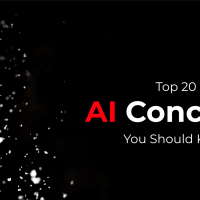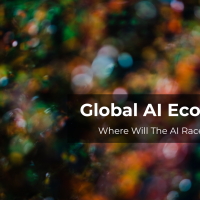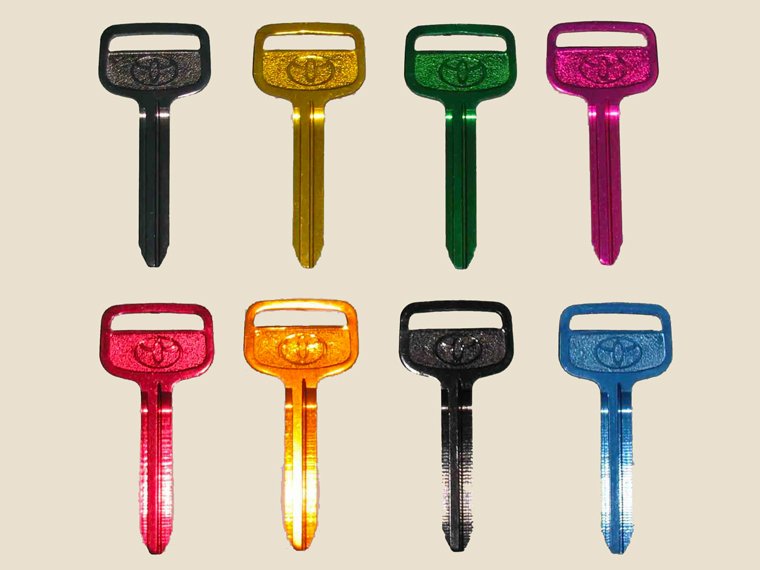
Circular economy, access Economy, or a new blockchain-driven sharing economy?
The Circular Economy and the Access Economy are fairly recent concepts, considered by many to be more appropriate and accurate terms to describe what has become more widely known as the “Sharing Economy”. The foundations behind the idea of access rather than sharing are the fact that people get access to goods and services through using various technologies, apps, and websites. This access via a community or a sound P2P is considered by some to be more valuable than actually owning the assets. Another interesting characteristic of these new models is sustainability. As Sharon Ede (2014) of Post Growth puts it:
“The Access Economy seeks to minimise the demand for materials… of better-managing waste.”
Some have suggested that the sharing economy is not so much about sharing as some corporations took advantage of the concept, becoming increasingly centralised platforms. Besides this, those that offer rooms, sustainable energy, or car drives, do so for money, therefore there is no real sharing happening.
Regardless, sharing economy models of economics and businesses are more sustainable and ecological. This fits with another trend – the concept of social impact, the way to create a sustainable economy, better ways to reward work, and how new blockchain technology is disrupting and offering solutions to correctly reward healthy P2P exchanges within the circular economy/sharing economy.
Advocates of these trends accept that individuals are incentivised by rewards, most commonly in the form of financial gain. Finding a proper sharing of the rewards is critical if these models are to have any success in mitigating income inequality and other major issues coming from the destruction of conventional work 9 to 5 concept.
Access economy and circular economy.
The access economy has created all kinds of challenges for businesses, and some will need to transform their strategies if they are to survive. For example, it is very challenging for hotels to be able to compete with thousands of people renting their properties via all the home-sharing platforms, given the relatively high costs of running a hotel in comparison.
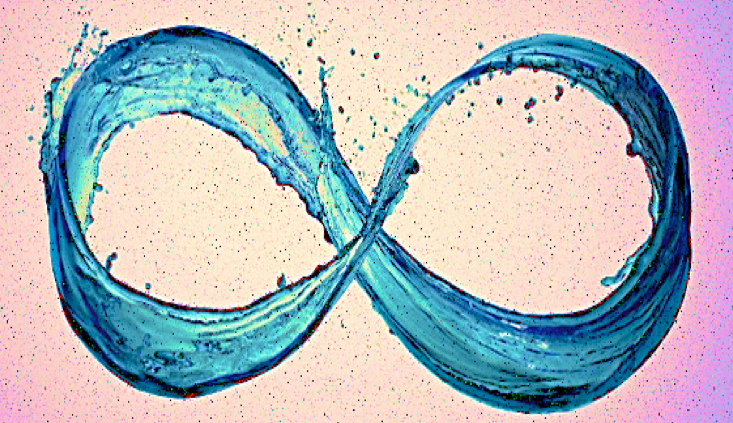
This trend seeks to make systems and services more efficient and effective, particularly in terms of cost. Additionally, it allows “idle assets” to be put to good use. People can rent out a spare room in their house, putting an otherwise unused asset to use. In a sense it involves making more of what is already available – space in cars, space in homes, tools that are infrequently used, and so on. In doing so, our activities generate less waste and create greater sustainability.
Interestingly, we accomplish this not by looking at ways to cut down emissions, but rather by meeting our daily needs in a less wasteful way in the first place – by using what is already available and which can be accessed. It is argued by some that this may be more of an attractive prospect to individuals who do not consider themselves to be particularly environmentally friendly, and this is another advantage of the circular economy.
Centralised and Decentralised Parts of the Circular Economy/Sharing Economy.
There are various business cases for the circular economy. Firstly, however, one needs to understand the centralised and decentralised parts of the sharing economy’s main players. An analysis by the global firm McKinsey estimates that shifting towards the circular economy could add $1 trillion to the global economy by 2025 and create 100,000 new jobs within the next five years. Under the Waste & Resources Action Programmes.
Moreover, the same report estimates that the European Union (EU) alone could benefit from an improved trade balance of £90 billion and the creation of 160,000 jobs (cf section entitled “Waste & Resources Action Programme’s Circular Economy 2020 Vision”. Manufacturers are likely to reap benefits the quickest given their reliance on raw materials. The McKinsey report argues that a subset of the EU manufacturing sector could realise net materials cost savings worth up to $630 billion per annum by 2025.
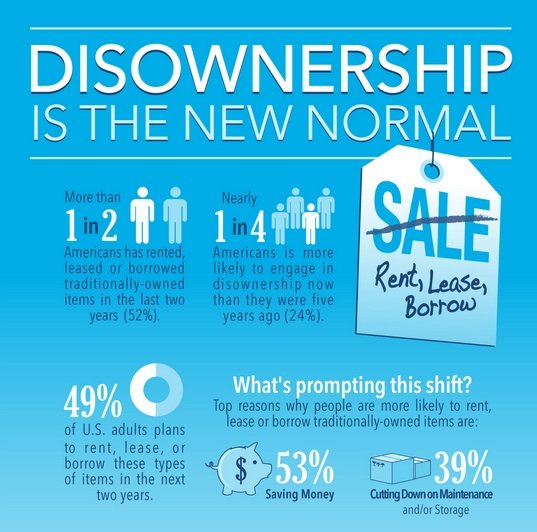
Greg Satell (2015) of Digital Tonto has also commented on the access economy. As he states:
“Rather than assets managed by centralised organisations we have ecosystems managed by platforms. Capabilities are no longer determined by what you own or control but by what you can access.”
Similarly to the discussion above, Satell argues that the focus should be less on creating efficiencies and more on creating connections. It is explained that the internet itself was, in many ways, initially envisaged and built on principles and concepts of access. After all, the World Wide Web can be seen on any computer, a form of access universal. Making this updatable by many different people has created even more access. Ultimately, this has led to a marketplace that is described as being “dominated by ecosystems”. This includes networks of developers and online shopfronts like Amazon that rely on the input of many to be as successful as they are.
The concept and framework of the circular economy – Ellen MacArthur Foundation.
The Ellen MacArthur Foundation has been particularly influential in raising awareness about the circular economy concept, working with businesses, governments, and academia to build a framework for an economy that is restorative and regenerative by design.
According to them, the concept and framework of the circular economy work to rebuild the flow of value capital, be it financial, manufactured, human, social or natural. This ensures enhanced flows of goods and services. The Ellen MacArthur Foundation developed the following system diagram that illustrates the continuous flow of technical and biological materials through the ‘value circle’.
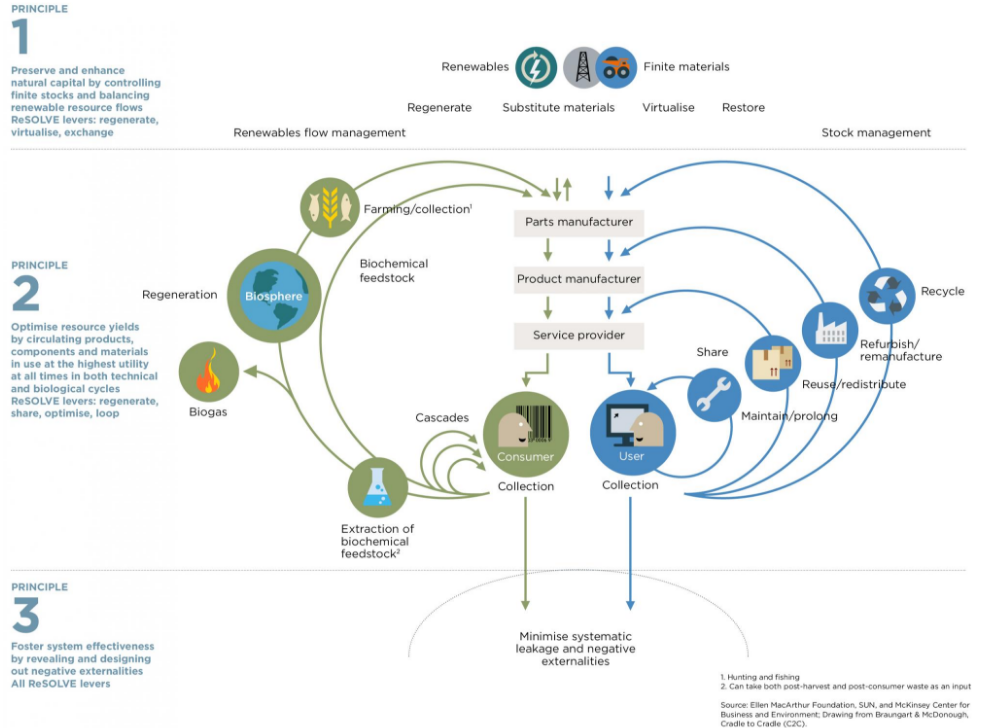
To synthetise and according to them:
“A circular economy is one that is restorative and regenerative by design, and which aims to keep products, components and materials at their highest utility and value at all times, distinguishing between technical and biological cycles.”
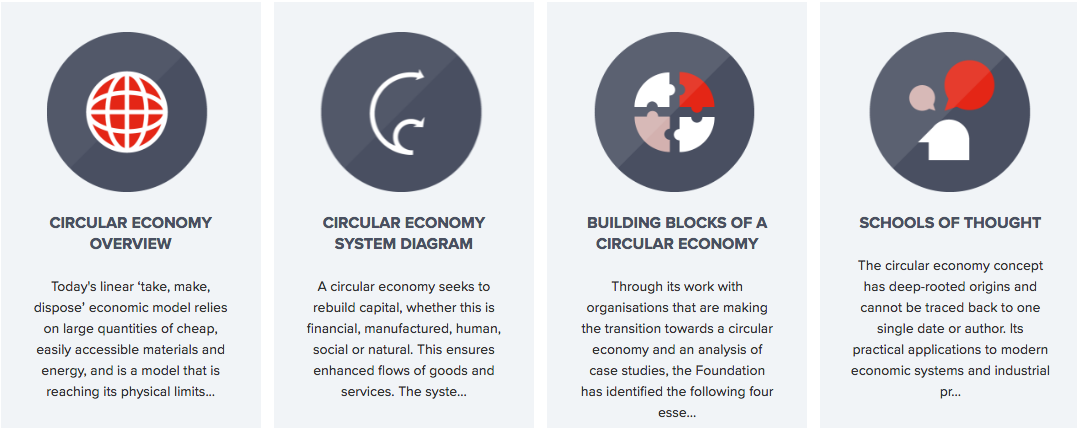
Circular economy and collaborative economy Jeremiah Owyang.
Jeremiah Owyang is another researcher and thought leader worth following. A known thought leader and researcher in Silicon Valley, and Founder of the Crowd Companies Council, Jeremiah has led both theoretical and practical work on these areas. He has contributed a wealth of insights and research over time time worthy of our attention. According to him:
“The Collaborative Economy enables people to get what they need from each other. Similarly, in nature, honeycombs are resilient structures that enable access, sharing, and growth of resources among a common group. Our latest version of the Honeycomb framework, Honeycomb 3.0, shows how the Collaborative Economy market has grown to include new applications in Reputation and Data, Worker Support, Mobility Services, and the Beauty Sector. “
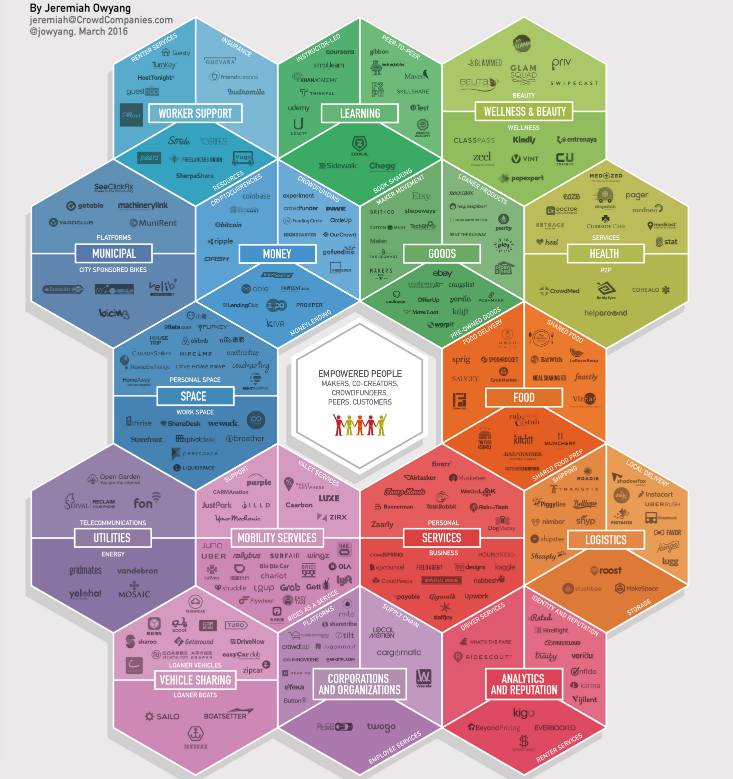
Circular economy, social impact, complexity, and its ecosystem
Another part of the concept of sharing economy associated with the circular economy is the concept of social impact. The social impact theory was created by Bibb Latané in 1981 and consists of three basic rules which consider how individuals can be sources or targets of social influence. According to Latané, social impact is the result of social forces, including the strength of the source of impact, the immediacy of the event, and the number of sources exerting the impact. The more targets of the impact that exist, the less impact each individual target receives.
On a practical level, connections have to be focused to achieve success, and thus contribute to sustainability in the circular economy. And by creating these clear and open connections that allow people to communicate and collaborate, greater innovation can be achieved. Many ventures have already experienced success in a variety of different ways, not least of which are the so-called “sharing economy” titans.
Moving forward, it seems likely that future success stories from the circular economy / sharing economy will similarly rely on collaboration, openness and a willingness to share. This involves being part of solid, open and transparent networks of platforms and collaborating through the use of technology. The emergence of new connected objects through the growing IoT space, the advent of new technologies such as blockchain, increased API use, the sharing of P2P platforms, and big data all bring new solutions and create challenges for our societies and economies today.
Circular economy, social impact, blockchain, future of work: what’s Next?
Blockchain technology is a particularly interesting concept in relation to the circular economy and sharing economy at large. The influential new tech business author and evangelist William Mougayar, the author of “The Business Blockchain”, and a board advisor to the Ethereum Foundation, the non-profit that oversees the development of one of two blockchains seeking to popularize the software worldwide, offers a solid view on how blockchains and digital currency could change the way we work, and specifically how we are compensated. This is one of the critical questions of the P2P, crowd sourced and crowd-based and sharing economy: how to reward people in a cashless increasingly machine-driven world.
In the words of William Mougayar, in an article entitled The Theory of a Blockchain Circular Economy, there are already some sound solutions emerging in an economic chain of a blockchain-based, circular-economy market place that can reward the various players in a healthy way:
We are in the early stages of a new chapter in the nature of work. The blockchain will enable us to do our jobs and be compensated inside new circular economies that have their own currency units and their own work units.
This, I believe, is one of the greatest themes to emerge from blockchain technology.
Most work today is compensated via bilateral agreements between a worker and an employer according to a simple contract: you work in X job, and we will compensate you in Y currency.
But what if we had greater autonomy over how we choose our own work? With more control, we would then be able to perform new types of tasks that may or may not resemble what is traditionally considered labor, and earn cryptocurrency instead of fiat currency.
As a result, instead of doing one job we could hold several paying jobs that are diversified, while not being tied down by the constraints of a single employer.
Already, a number of blockchain based businesses are compensating users for their ‘work’ via digital tokens.
Steemit for example, rewards users who vote-up or write posts on its decentralized content platform.
The theory of decentralized transportation platform La’Zooz is that you earn Zooz points, just by driving your car while the app collects data about your driving patterns.
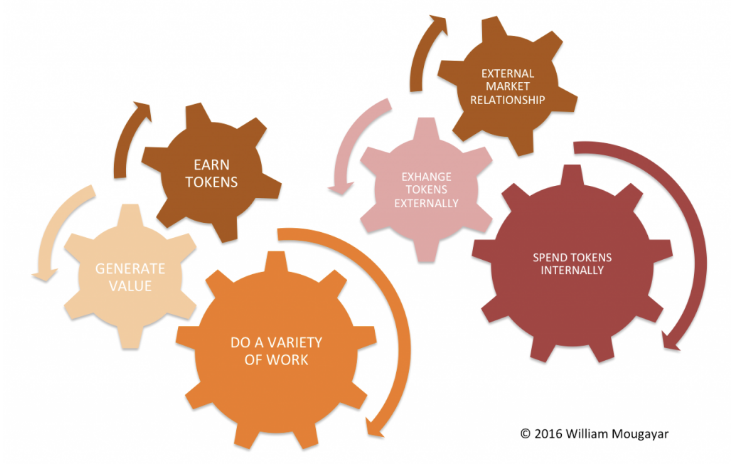
Many predict that the spectacular growth of these recent patterns are only set to increase further, but one must argue that this was always part of the DNA of human tribes throughout history. The challenge before us now is how to manage all these disruptive trends in a world that is increasingly complex – driven by technology and corporations, not- for-profits, social enterprises, and activists – all of them needing to master digital identity, onlinemarketing, and social media. The main challenge is how to design and set up healthy and effective reward platforms to enable people that want to give others access to their own goods and services efficiently with proper reward.
One must admit that we are discussing nascent trends and technologies, with much work still in progress and much more needing to be done. But given the rapid progress and success already enjoyed by many fantastic organisations and by the major players in this field, it is easy to agree that the future will tend towards greater access and connections rather than less.
Reading List About Blockchain:
Blockchain Revolution: How the Technology Behind Bitcoin Is Changing Money, Business and the World
Blockchain: Blueprint for a New Economy
The Business Blockchain: Promise, Practice, and Application of the Next Internet Technology

Dinis Guarda is an author, academic, influencer, serial entrepreneur, and leader in 4IR, AI, Fintech, digital transformation, and Blockchain. Dinis has created various companies such as Ztudium tech platform; founder of global digital platform directory openbusinesscouncil.org; digital transformation platform to empower, guide and index cities citiesabc.com and fashion technology platform fashionabc.org. He is also the publisher of intelligenthq.com, hedgethink.com and tradersdna.com. He has been working with the likes of UN / UNITAR, UNESCO, European Space Agency, Davos WEF, Philips, Saxo Bank, Mastercard, Barclays, and governments all over the world.
With over two decades of experience in international business, C-level positions, and digital transformation, Dinis has worked with new tech, cryptocurrencies, driven ICOs, regulation, compliance, and legal international processes, and has created a bank, and been involved in the inception of some of the top 100 digital currencies.
He creates and helps build ventures focused on global growth, 360 digital strategies, sustainable innovation, Blockchain, Fintech, AI and new emerging business models such as ICOs / tokenomics.
Dinis is the founder/CEO of ztudium that manages blocksdna / lifesdna. These products and platforms offer multiple AI P2P, fintech, blockchain, search engine and PaaS solutions in consumer wellness healthcare and life style with a global team of experts and universities.
He is the founder of coinsdna a new swiss regulated, Swiss based, institutional grade token and cryptocurrencies blockchain exchange. He is founder of DragonBloc a blockchain, AI, Fintech fund and co-founder of Freedomee project.
Dinis is the author of various books. He has published different books such “4IR AI Blockchain Fintech IoT Reinventing a Nation”, “How Businesses and Governments can Prosper with Fintech, Blockchain and AI?”, also the bigger case study and book (400 pages) “Blockchain, AI and Crypto Economics – The Next Tsunami?” last the “Tokenomics and ICOs – How to be good at the new digital world of finance / Crypto” was launched in 2018.
Some of the companies Dinis created or has been involved have reached over 1 USD billions in valuation. Dinis has advised and was responsible for some top financial organisations, 100 cryptocurrencies worldwide and Fortune 500 companies.
Dinis is involved as a strategist, board member and advisor with the payments, lifestyle, blockchain reward community app Glance technologies, for whom he built the blockchain messaging / payment / loyalty software Blockimpact, the seminal Hyperloop Transportations project, Kora, and blockchain cybersecurity Privus.
He is listed in various global fintech, blockchain, AI, social media industry top lists as an influencer in position top 10/20 within 100 rankings: such as Top People In Blockchain | Cointelegraph https://top.cointelegraph.com/ and https://cryptoweekly.co/100/ .
Between 2014 and 2015 he was involved in creating a fabbanking.com a digital bank between Asia and Africa as Chief Commercial Officer and Marketing Officer responsible for all legal, tech and business development. Between 2009 and 2010 he was the founder of one of the world first fintech, social trading platforms tradingfloor.com for Saxo Bank.
He is a shareholder of the fintech social money transfer app Moneymailme and math edutech gamification children’s app Gozoa.
He has been a lecturer at Copenhagen Business School, Groupe INSEEC/Monaco University and other leading world universities.







